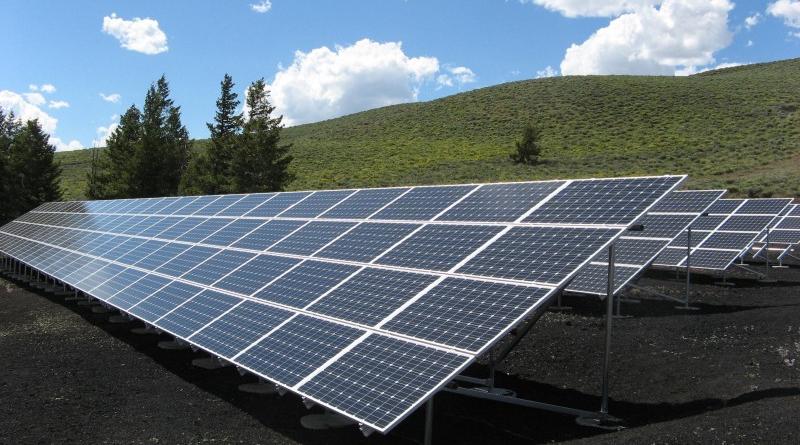Ανανεώσιμες: κυριολεκτικά "power to the people"

For me, working to stop threats to endangered species and our communities is about more than fighting destructive fossil fuel extraction, pollution and over-consumption — I also want to support a just transition to an alternative energy system.
That transition is where I find hope. It’s a place that highlights some of the positive, solution-oriented initiatives happening across the country.
Many Americans get their energy from investor-owned utilities that have monopoly control over energy markets. These utilities are usually regulated by public utility commissions, with which they often enjoy long-standing and cozy relationships.
Between these utilities and their regulators, decisions are made that affect not only electricity prices, but also how easy and affordable it is for their customers to go solar.
This natural monopoly power structure made more sense back when the grid was first being developed to expand electricity access across the country, as natural monopolies still do for water and road infrastructure. Competition to centralized power plants and the grid could have created expensive overlap and inefficiencies.
But now, in many parts of the country, a more decentralized energy grid is emerging — in part due to added solar and wind energy.
We now must ask, does the traditional utility structure still make sense? Moreover, does a decentralized and distributed energy grid allow for a new way to make ownership and control of the power sector more democratic?
One emerging answer to these questions is known as community choice aggregation. This structure shifts the control of energy generation away from the investor-owned utilities and to a non-profit public entity.
The non-profit under this structure has the mission of providing as much clean, renewable energy as possible rather than focusing on maximizing profits. While some community choice energy programs have opted to buy renewable energy credits, others are developing local, distributed energy resources.
Community choice aggregation has great potential to democratize the utility-scale energy sector. It can give communities the ability to choose energy sources that benefit rather than harm their health and the environment.
Another example of a decentralized system comes from new-economy energy cooperatives. These entities quite literally enable energy consumers to take power into their own hands.
Decentralized energy sources allow for an alternative way to do business, to the benefit of wildlife and communities. New energy cooperatives provide greater energy efficiency while adopting rooftop and community solar systems.
Some examples of this structure can be seen with the Permanent Community Energy Cooperative in California, Co-op Power in Massachusetts and Cooperative Energy Futuresin Minnesota.
These community energy sources are using cooperative models to promote a democratic and equitable process. By creating and utilizing this framework, a more democratic outcome is inherently built into the fabric of these cooperatives.
They are also historically rooted in communities of color and low-income neighborhoods, and are thus well positioned to address issues around justice and equity.
This is what energy democracy can look like. And these modern, inclusive systems are increasingly important as we confront the effects of climate change in an unprecedented political environment.
If you want to see energy democracy in action, check out the ongoing Energy Democracy Tour. The tour is an effort to promote work being done by communities around the United States — especially by low income communities, communities of color and their allies — to develop and control renewable energy resources to meet pressing human needs and empower their communities.
It’s about local communities, taking up the work to build a cleaner and more equitable future. The tour will feature events hosted by the organizations contributing to the Energy Democracy Movement as well as other frontline organizations that are doing or anticipating energy democracy work in their communities.
As a new staff member at the Center for Biological Diversity, focused on renewable energy campaigns, I look forward to promoting an equitable and wildlife-friendly future through the vision and practice of energy democracy. I also hope you’ll join me in following the Energy Democracy Tour for a sneak peak of what’s to come.
Energy democracy is all about community and individuals taking back power, so I want to hear your thoughts and ideas. You can email me at spatel@biologicaldiversity.org, and look out for my future work in support of the energy democracy movement as well as related Center campaigns.
Shiva Patel is the Center for Biological Diversity’s renewable energy campaigner. He co-leads the Population and Sustainability program’s renewable-energy work, with a focus on distributed community solar. Before joining the Center he worked on advocating, designing and building an equitable, inclusive community-owned solar program for low-income residents and communities of color in Alameda County, Calif.
20 June 2018
Shiva Patel





